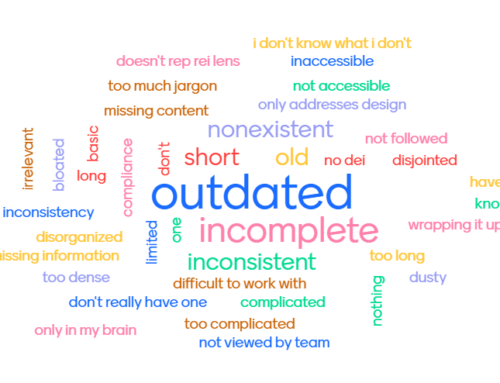 If we agree that we should develop messaging that resonates with our donors, what should we do when that messaging might be offensive to others? Take the case of donors who make substantial gifts to charities rather than leaving assets to their “good for nothing” adult children.
If we agree that we should develop messaging that resonates with our donors, what should we do when that messaging might be offensive to others? Take the case of donors who make substantial gifts to charities rather than leaving assets to their “good for nothing” adult children.
I presented a “Storytelling for Fundraisers” workshop in Wilmington, NC on Friday for the Cape Fear Region Chapter of the Association of Fundraising Professionals. We did several exercises around telling better stories about our donors and volunteers. One of the participants who worked for a conservation organization talked about a donor who worked with the nonprofit to permanently protect his land from development, rather than leaving the land to his children without restrictions. The donor was afraid this his children would immediately sell the land for development to the highest bidder, with little regard for the environmental assets of the land or the historical value of the property to his family.
That immediately reminded me of all of those wonderful little ol’ ladies (and some gentlemen too) who I interviewed when writing donor profiles for the Humane Society a decade ago. Many of them were leaving significant portions of their estates to protect animals, in many cases because they felt like their pets had provided more love and attention to them than their own children. They were very clear and unequivocal that their children didn’t “deserve it” and the animals did.
Donors with this motivation — to share their personal wealth with the charities they adore rather than their own adult children who have disappointed them in some way — don’t seem particularly shy about sharing this perspective with their charities. So why should nonprofits be shy about talking about this motivation in their marketing and fundraising materials?
“Got Good for Nothing Kids? Leave Your Estate to Us Instead!”
That was the provocative question I posed to the participants in the Wilmington workshop. Would they ever consider saying such a thing? Should they? And if so, how?
Playing the devil’s advocate, I argued that if you find a commonality among a particular segment of your donors, even if it embarrasses you, you should run with it. We in the world of nonprofit marketing and fundraising consulting are constantly preaching to nonprofits to understand their audiences and to tailor our messages to the donors’ interests, needs, and motivations. This is one such example.
Naturally, many in the room were fearful of offending the adult children of their donors. While the donors may privately share their frustrations, and even talk about them openly when they are being interviewed for a donor profile, the fundraisers in the room were all very leery of being so frank about their donors’ decisionmaking processes in writing. (And truth be told, I danced around the issue in all of those donor profiles I wrote back then too.)
Again, playing the devil’s advocate, I said, “The children aren’t your target audience. Why should you care what they think?” I referred to The Great Schlep campaign video by the Jewish Council for Education & Research, which offended lots of people thanks to potty-mouth Sarah Silverman, but was very successful with its intended target audience.
We didn’t reach a consensus in the workshop and that wasn’t my goal. I was simply trying to impress upon the participants that they shouldn’t automatically dismiss aspects of their target audiences’ motivations or sanitize their donor profiles just because part of the story makes the nonprofit staff uncomfortable. I urged the participants to think more about questions like these and to explore ways to touch those hot-button motivations in their donors using language that is neither boiling over with insults or too watered down with euphemisms. Perhaps they could talk about “options for your estate when your children don’t share your values.”
Coming up with creative ways to deal with these and other provocative questions is a great way to get your nonprofit to stand out from the crowd. When you get good intelligence on what motivates your supporters, I encourage you to have a little fun with it and to try some new approaches.
It’s your turn . . . would you ever consider including messaging about “good for nothings” in your fundraising materials? How have you dealt with messaging that resonated soundly with one segment of your audience even though it could potentially offend another?






